Introduction
Lahore, renowned as the heart of Pakistan, pulsates with an irresistible allure for food enthusiasts worldwide. Its vibrant streets echo with the aromas of spices, sizzling grills, and the bustling energy of a city deeply intertwined with its gastronomic delights. When exploring the tapestry of flavors that define food in Lahore, one encounters a symphony of diversity and richness unparalleled in the region. From centuries-old recipes steeped in Mughal heritage to modern fusion cuisine, Lahore beckons visitors with an epicurean journey that transcends mere dining—it’s an immersive cultural experience. The city’s culinary landscape is an ode to fusion, blending traditional authenticity with contemporary innovations, crafting a tantalizing array of iconic dishes that narrate tales of history and culture through every bite. Whether it’s the iconic Nihari simmering in spices or the irresistible aroma of Seekh Kebabs grilled to perfection, food in Lahore is an art form, a cultural heritage passed down through generations. The city’s food culture is an intricate mosaic, boasting everything from delectable street eats like Gol Gappay and Samosas to the opulence of Lahori Karahi and Biryani. This blend of traditional recipes and modern gastronomy reflects the soul of Lahore—a city where every meal is a celebration, every dish a testament to its rich history, and every flavor a gateway to the city’s vibrant essence. In the heart of Lahore, food isn’t just sustenance; it’s an expression of identity, a celebration of heritage, and an invitation to partake in a culinary symphony like no other.
List of 30 Top Food in Lahore
| S. No | Name of Food/Dish | Category | Price Range (USD & EUR) | Main Ingredients (if available) |
|---|---|---|---|---|
| 1 | Nihari | Meat Dish | $5-$15 USD, €4-€12 EUR | Slow-cooked meat, Spices |
| 2 | Seekh Kebab | Meat Dish | $2-$8 USD, €2-€7 EUR | Minced meat, Spices |
| 3 | Chicken Tikka | Meat Dish | $4-$12 USD, €3-€10 EUR | Marinated chicken, Spices |
| 4 | Paya | Meat Dish | $6-$18 USD, €5-€15 EUR | Trotters, Spices |
| 5 | Halwa Puri | Breakfast | $2-$6 USD, €2-€5 EUR | Fried bread, Semolina |
| 6 | Lahori Karahi | Meat Dish | $5-$15 USD, €4-€12 EUR | Meat, Tomatoes, Spices |
| 7 | Chapli Kebab | Meat Dish | $3-$10 USD, €2-€8 EUR | Minced meat, Spices |
| 8 | Hareesa | Savoury | $4-$12 USD, €3-€10 EUR | Wheat, Meat, Ghee |
| 9 | Biryani | Rice Dish | $5-$15 USD, €4-€12 EUR | Rice, Meat/Vegetables, Spices |
| 10 | Gol Gappay (Pani Puri) | Snack | $1-$5 USD, €1-€4 EUR | Hollow shells, Tangy water |
| 11 | Samosas | Savoury | $1-$4 USD, €1-€3 EUR | Pastry, Filling (Potato/Meat) |
| 12 | Chana Chaat | Savoury | $2-$6 USD, €2-€5 EUR | Chickpeas, Spices, Yogurt |
| 13 | Dahi Bhalla | Savoury | $2-$7 USD, €2-€6 EUR | Lentil balls, Yogurt |
| 14 | Khoya Naan | Bread | $1-$4 USD, €1-€3 EUR | Naan bread, Khoya (dried milk) |
| 15 | Phajjay Ke Paye | Meat Dish | $6-$18 USD, €5-€15 EUR | Goat Trotters, Spices |
| 16 | Anda Shami Burger | Fast Food | $2-$6 USD, €2-€5 EUR | Burger bun, Egg, Shami kebab |
| 17 | Tawa Chicken | Meat Dish | $4-$12 USD, €3-€10 EUR | Grilled Chicken, Spices |
| 18 | Saag | Veg Dish | $3-$9 USD, €2-€8 EUR | Leafy Greens, Spices |
| 19 | Kunafa | Sweet | $4-$12 USD, €3-€10 EUR | Cheese, Vermicelli, Syrup |
| 20 | Rabri | Sweet | $2-$8 USD, €2-€7 EUR | Condensed Milk, Nuts |
| 21 | Zarda | Sweet | $2-$6 USD, €2-€5 EUR | Rice, Sugar, Nuts |
| 22 | Gajar ka Halwa | Sweet | $3-$10 USD, €2-€8 EUR | Carrots, Sugar, Nuts |
| 23 | Falooda | Dessert | $3-$8 USD, €2-€7 EUR | Noodles, Rose Syrup, Ice Cream |
| 24 | Lassi | Beverage | $1-$5 USD, €1-€4 EUR | Yogurt, Sugar, Flavorings |
| 25 | Kheer | Dessert | $3-$9 USD, €2-€8 EUR | Rice, Milk, Nuts |
| 26 | Jalebi | Sweet | $1-$5 USD, €1-€4 EUR | Batter, Syrup |
| 27 | Kashmiri Chai | Beverage | $2-$7 USD, €2-€6 EUR | Tea, Spices, Almonds |
| 28 | Fruit Chaat | Salad | $2-$6 USD, €2-€5 EUR | Mixed fruits, Spices |
| 29 | Peshawari Ice Cream | Dessert | $3-$8 USD, €2-€7 EUR | Cream, Nuts, Flavorings |
| 30 | Butter Chicken | Meat Dish | $6-$18 USD, €5-€15 EUR | Chicken, Butter, Cream |
| S. No | Name of Food/Dish | Category | Price Range (USD & EUR) | Main Ingredients (if available) |
Note: The price range provided is approximate and may vary depending on the restaurant or vendor.
Nihari: A slow-cooked stew known for its rich and flavorful broth made from meat (usually beef shank or lamb), slow-cooked with spices like cloves, cardamom, and cinnamon. Nihari is typically enjoyed with naan bread or rice and garnished with fresh ginger, green chilies, and lemon.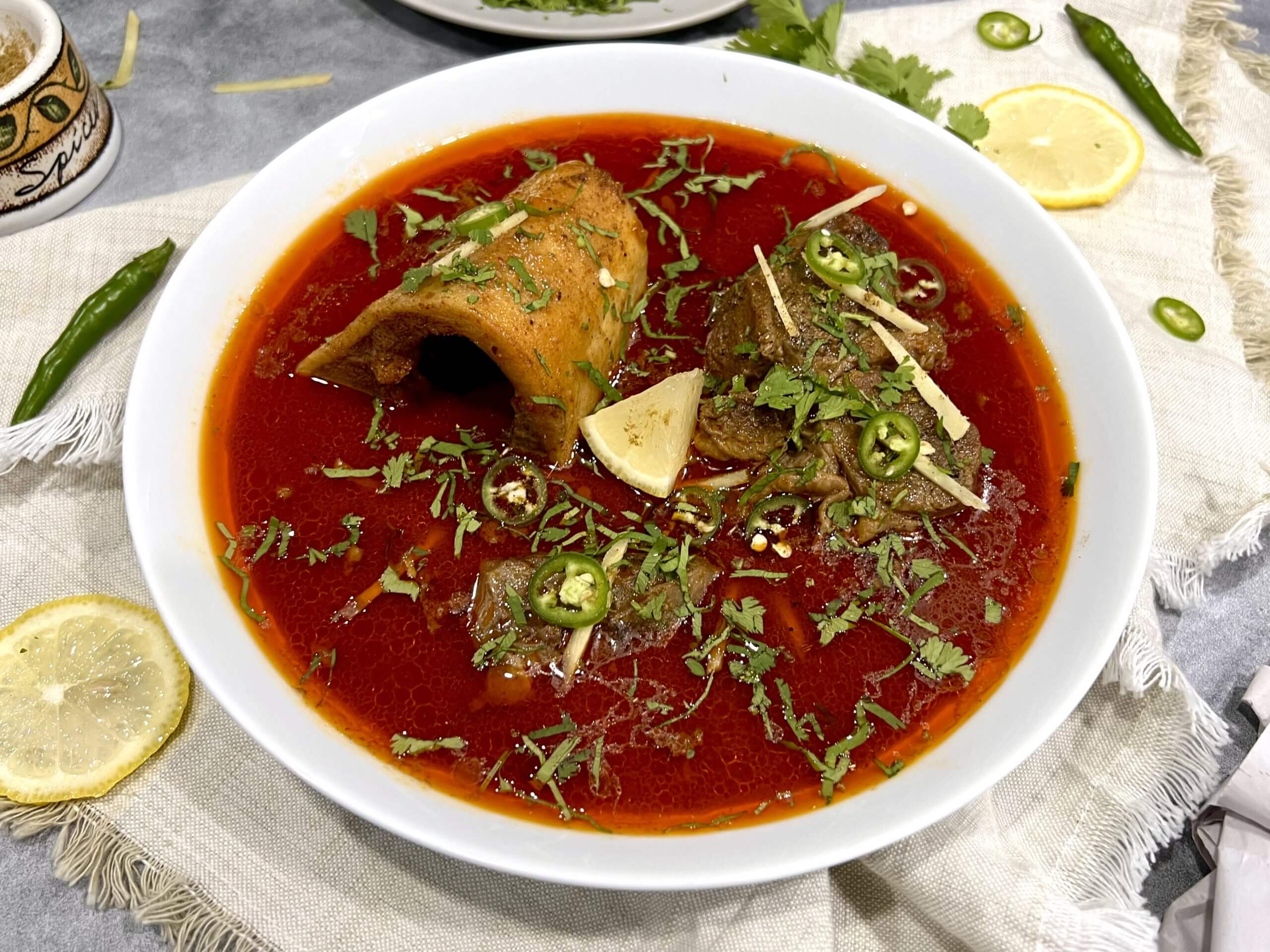
Seekh Kebab: These succulent kebabs are made from minced meat, usually beef or lamb, mixed with various spices like cumin, coriander, and garam masala, then shaped onto skewers and grilled or roasted. They’re served with naan or paratha alongside chutneys or yogurt-based sauces.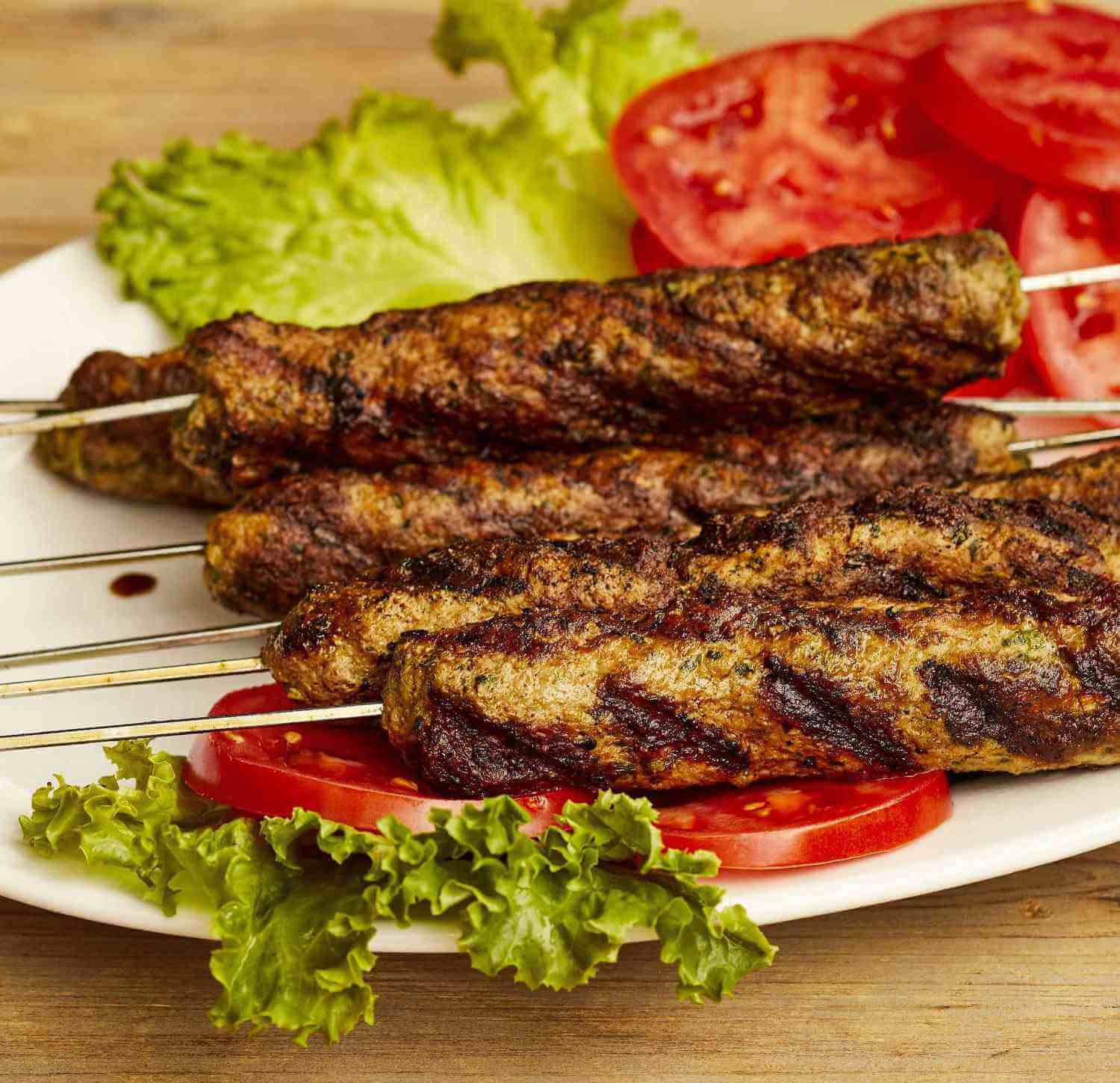
Chicken Tikka: Tender pieces of marinated chicken, often in a blend of yogurt and spices including cumin, coriander, turmeric, and chili powder. The marinated chicken is grilled or roasted, resulting in a smoky and flavorful dish that’s a favorite appetizer or main course.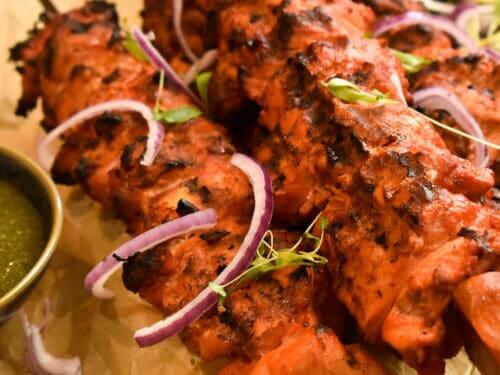
Paya: A slow-cooked stew made from cow or goat trotters, simmered with spices and herbs until the meat is incredibly tender and flavorful. This dish often includes a rich, gelatinous broth that’s served with naan or rice.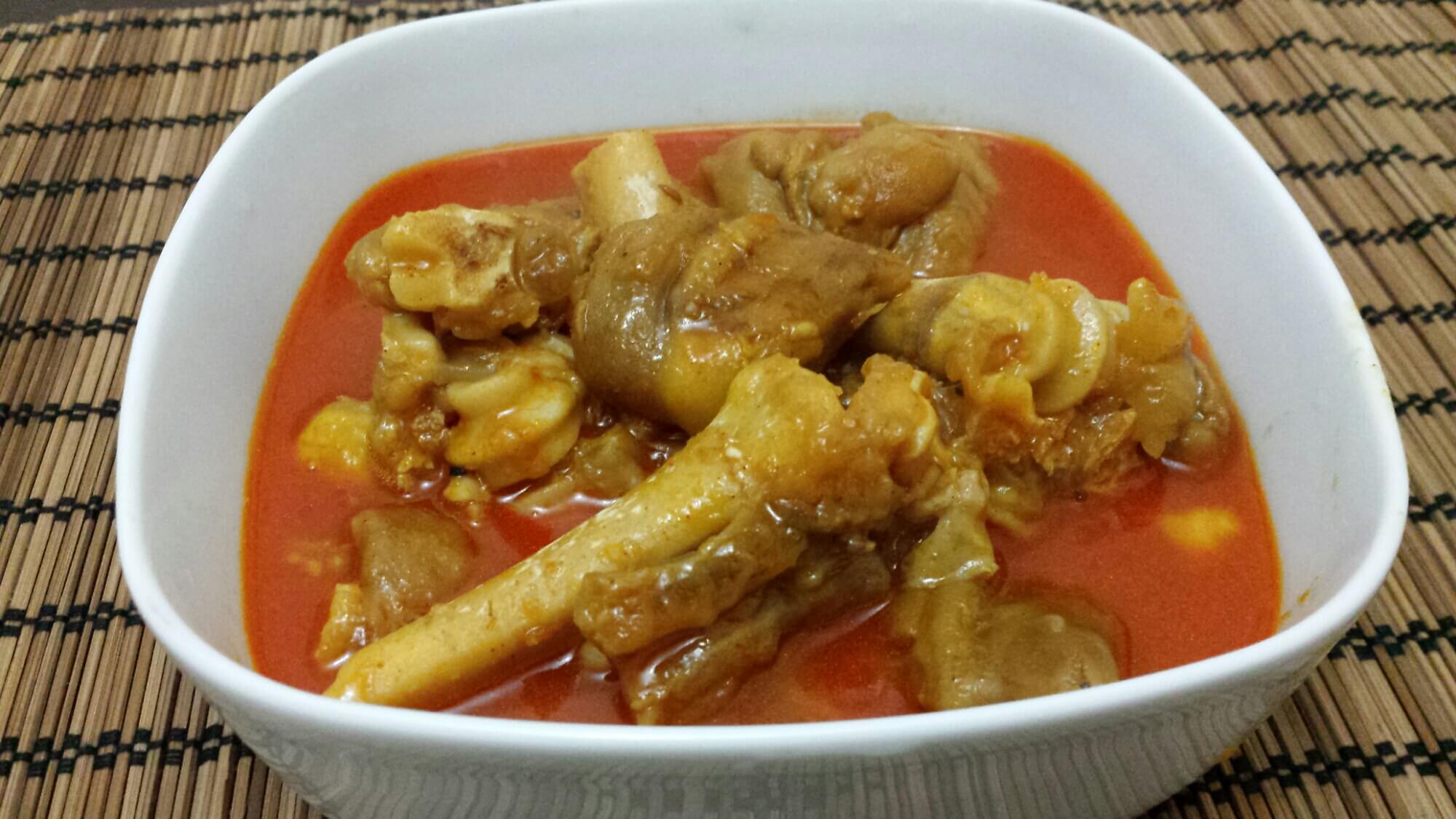
Halwa Puri: A classic breakfast dish consisting of fluffy, deep-fried bread (puri) served with a sweet and semolina-based halwa, offering a delightful contrast of flavors. It’s often accompanied by chana masala (chickpea curry) to balance the sweetness of the halwa.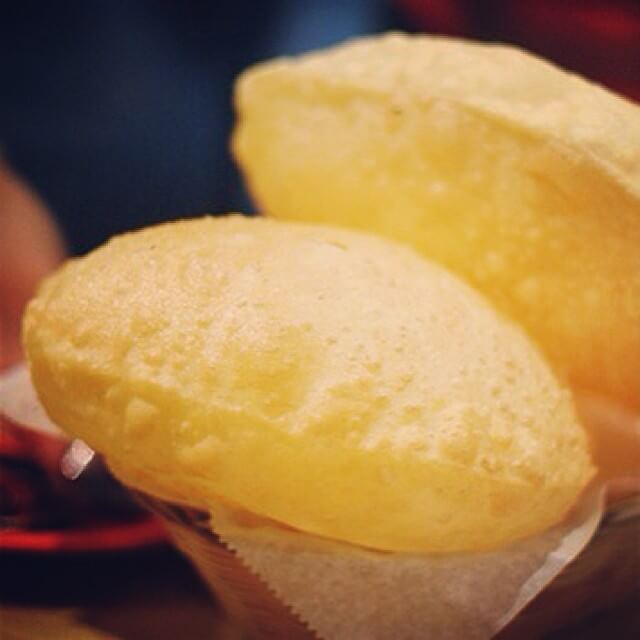
Lahori Karahi: A spicy and aromatic dish cooked in a wok-like utensil called a karahi. It typically includes meat (chicken or mutton) cooked with tomatoes, onions, and a blend of spices such as cumin, coriander, and garam masala, resulting in a rich and flavorsome gravy.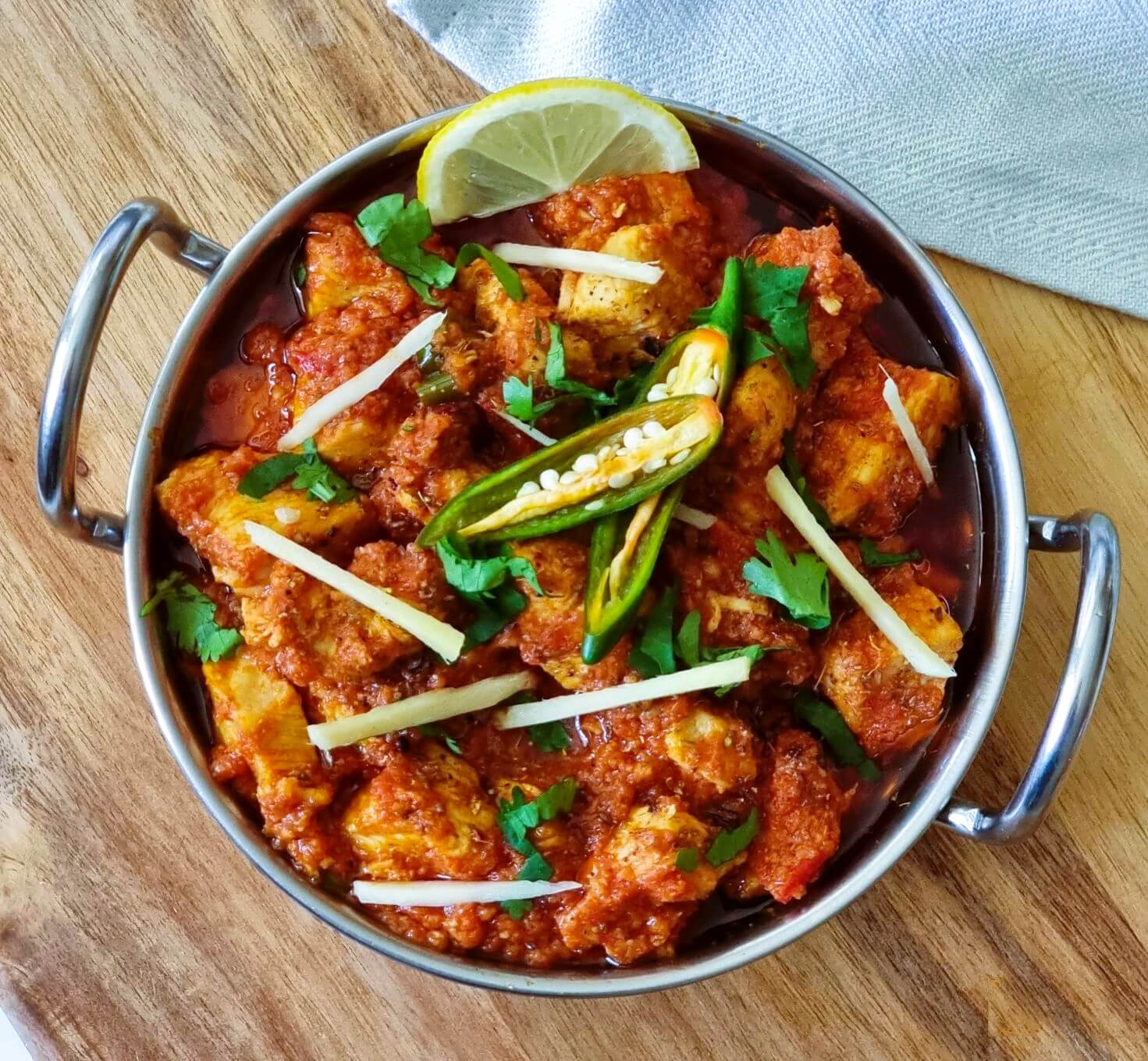
Chapli Kebab: Flat, round kebabs made from minced meat (usually beef or lamb), mixed with various spices, tomatoes, onions, and coriander leaves. The patties are shallow-fried, giving them a crispy exterior while maintaining a juicy interior.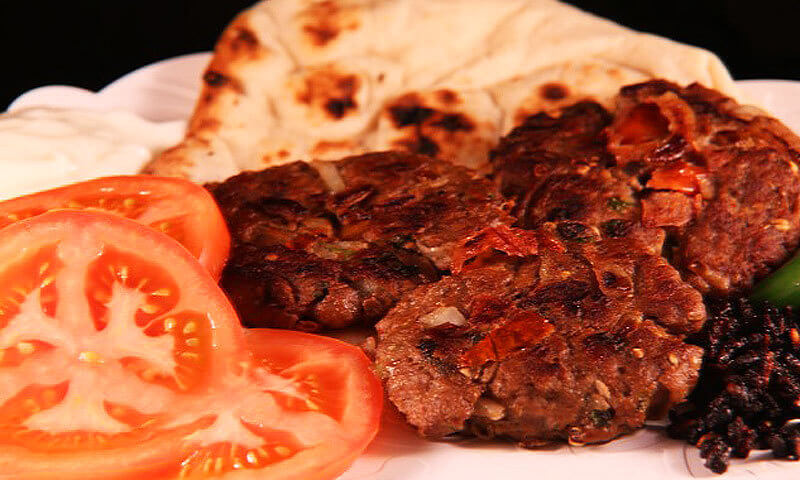
Hareesa: A traditional dish made from wheat, meat (often lamb or chicken), and a blend of spices. The wheat is cooked with meat until it forms a thick porridge-like consistency, resulting in a hearty and nourishing meal.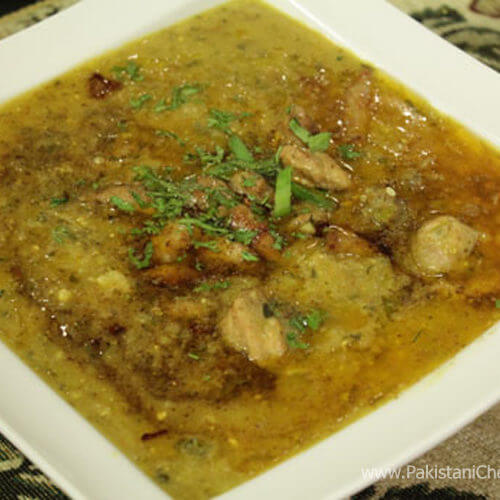
Biryani: Fragrant rice cooked with layers of marinated meat (often chicken, beef, or goat), infused with aromatic spices such as saffron, cardamom, cloves, and bay leaves. Biryani is often garnished with fried onions, mint, and boiled eggs, offering a flavorful and aromatic experience.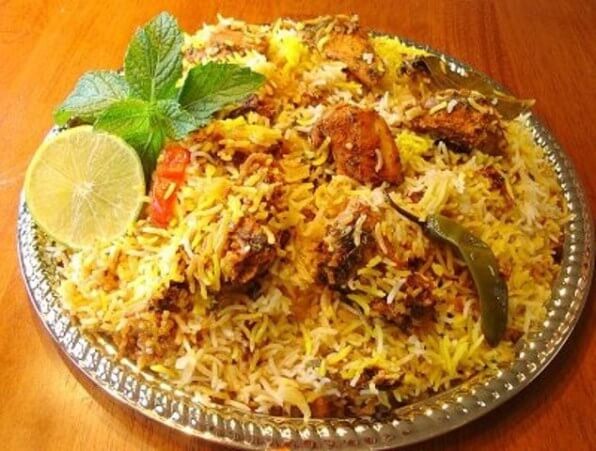
Gol Gappay (Pani Puri): Hollow crispy shells filled with a tangy mixture of flavored water, tamarind chutney, chickpeas, potatoes, and spices. These bite-sized snacks provide a burst of flavors and textures with each bite.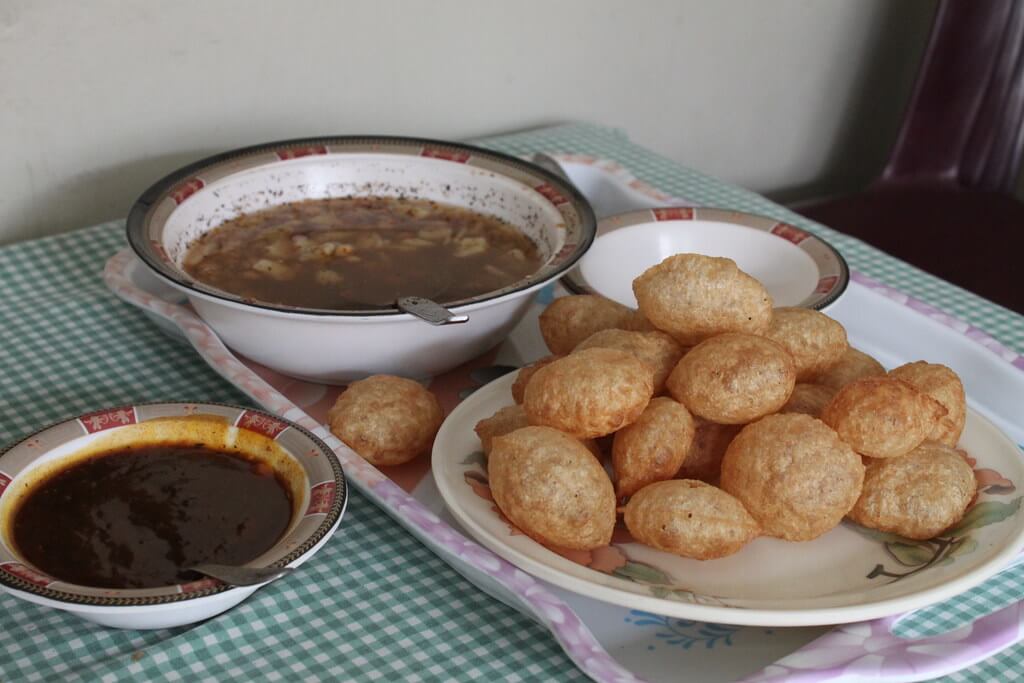
Samosas: Triangular pastries filled with spiced potatoes, peas, and sometimes minced meat. They’re deep-fried until crispy and served with chutneys, making them a popular snack or appetizer.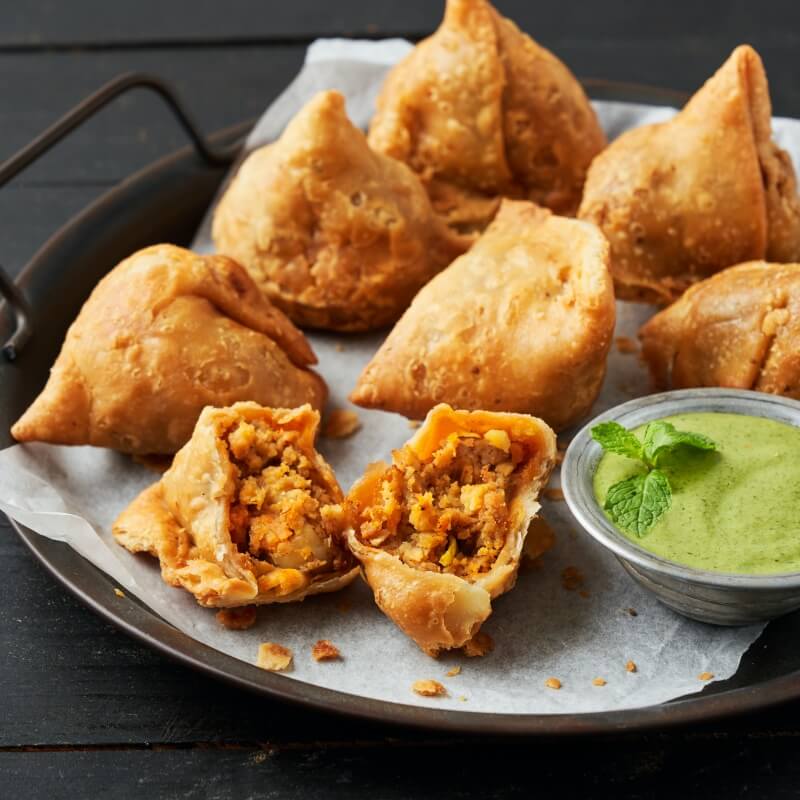
Chana Chaat: A refreshing and tangy salad made from chickpeas, chopped onions, tomatoes, green chilies, and various spices. It’s often garnished with fresh coriander leaves, yogurt, and tangy tamarind chutney.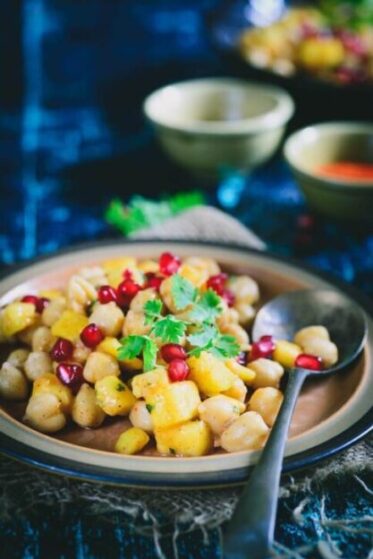
Dahi Bhalla: Soft lentil dumplings soaked in creamy yogurt and topped with tangy tamarind chutney, mint, and spices. This dish offers a delightful combination of textures and flavors, balancing the creaminess of yogurt with the tanginess of chutneys.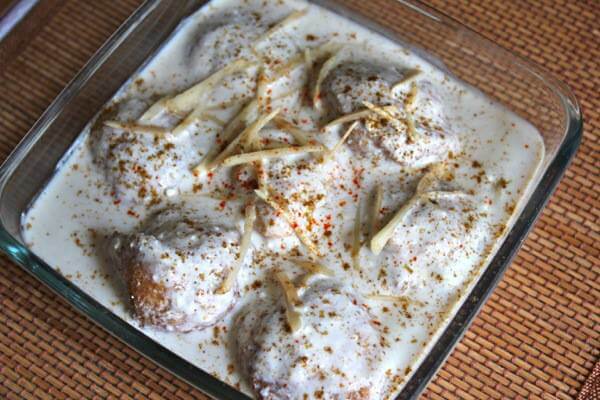
Khoya Naan: A sweet and indulgent bread stuffed with a rich mixture of khoya (reduced milk), nuts, and sugar. It’s typically enjoyed as a dessert or a sweet treat.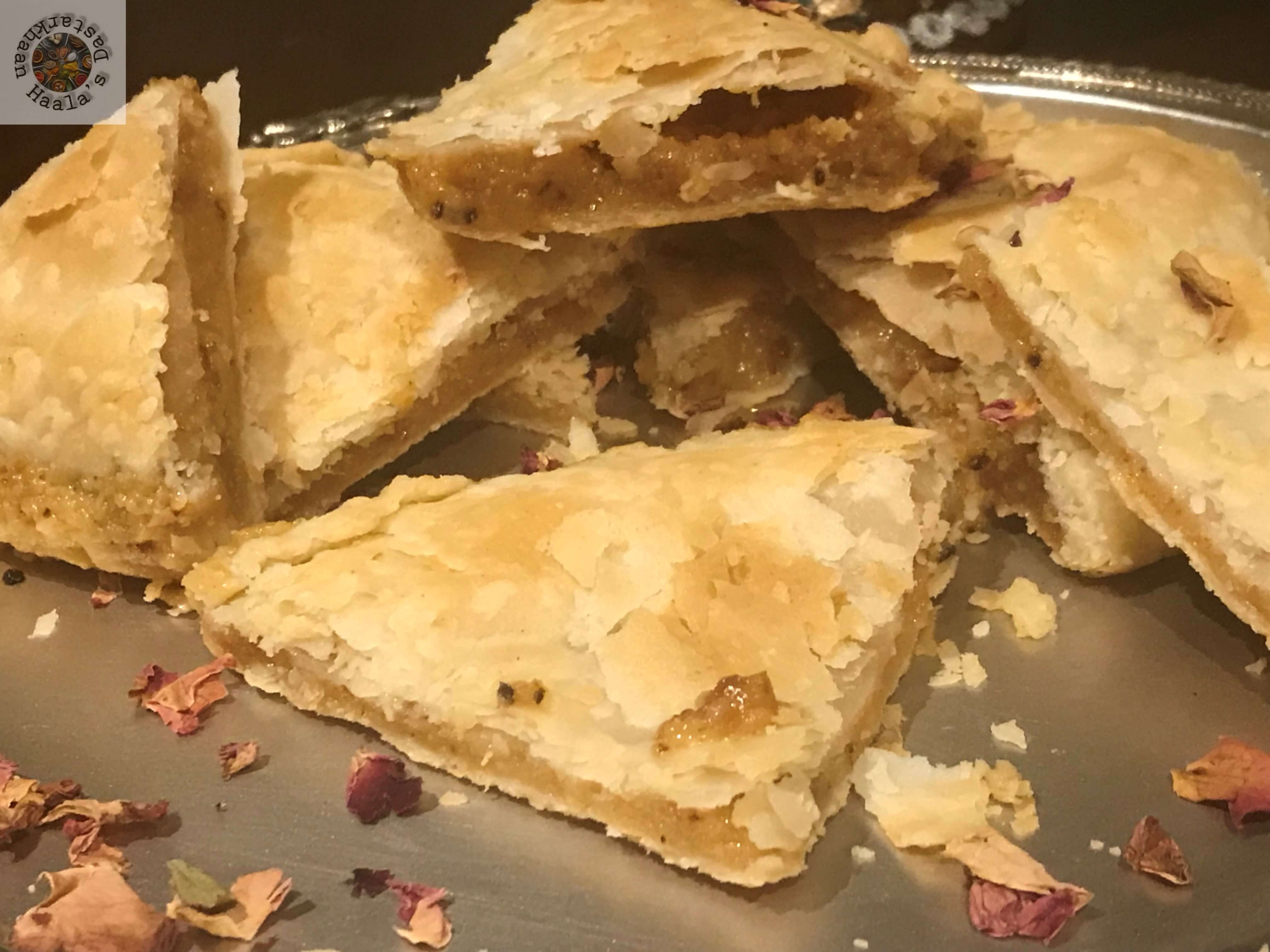
Phajjay Ke Paye: A flavorful stew made from goat trotters simmered with aromatic spices until the meat is tender and the broth is rich. It’s often served with naan or rice and garnished with ginger, green chilies, and lemon for added zest.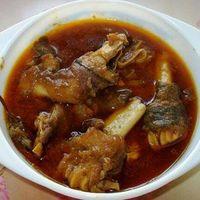
Anda Shami Burger: This delightful burger combines a flavorful Shami kebab (a mix of minced meat, lentils, and spices) with a fried egg (Anda). The kebab patty is usually made by blending cooked lentils, minced meat, and spices, then shaped into patties and shallow-fried. Served in a bun with lettuce, onions, and chutneys, this burger offers a fusion of savory flavors and textures.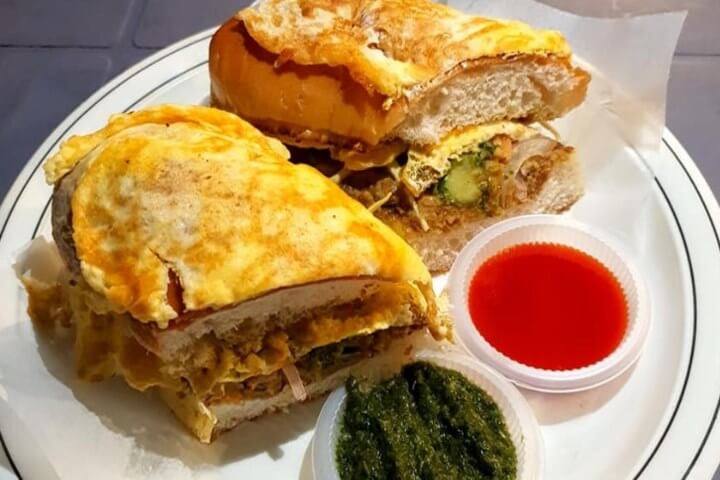
Tawa Chicken: Tawa refers to a griddle, and this dish involves marinated chicken cooked on a hot griddle with onions, tomatoes, and a blend of spices. The chicken is typically marinated in yogurt and spices like ginger, garlic, cumin, coriander, and red chili powder. Cooked on the tawa, it’s served hot, retaining its tenderness and smoky flavor.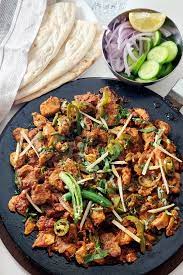
Saag: A traditional Punjabi dish made from leafy greens, primarily mustard greens and spinach, cooked with spices like garlic, ginger, green chilies, and often with added ingredients like ghee or butter. Saag is usually simmered for hours to create a thick and flavorful puree, served with makki di roti (cornbread) or naan.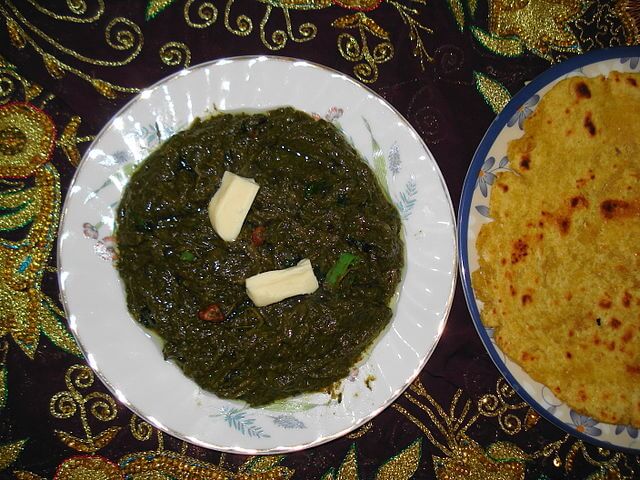
Kunafa: A Middle Eastern dessert made from shredded phyllo dough or semolina, layered with a generous amount of cheese (usually Akkawi or mozzarella) and soaked in sugar-based syrup, often flavored with rose or orange blossom water. It’s baked until golden brown and crispy, creating a delightful contrast between the crunchy exterior and gooey, sweet interior.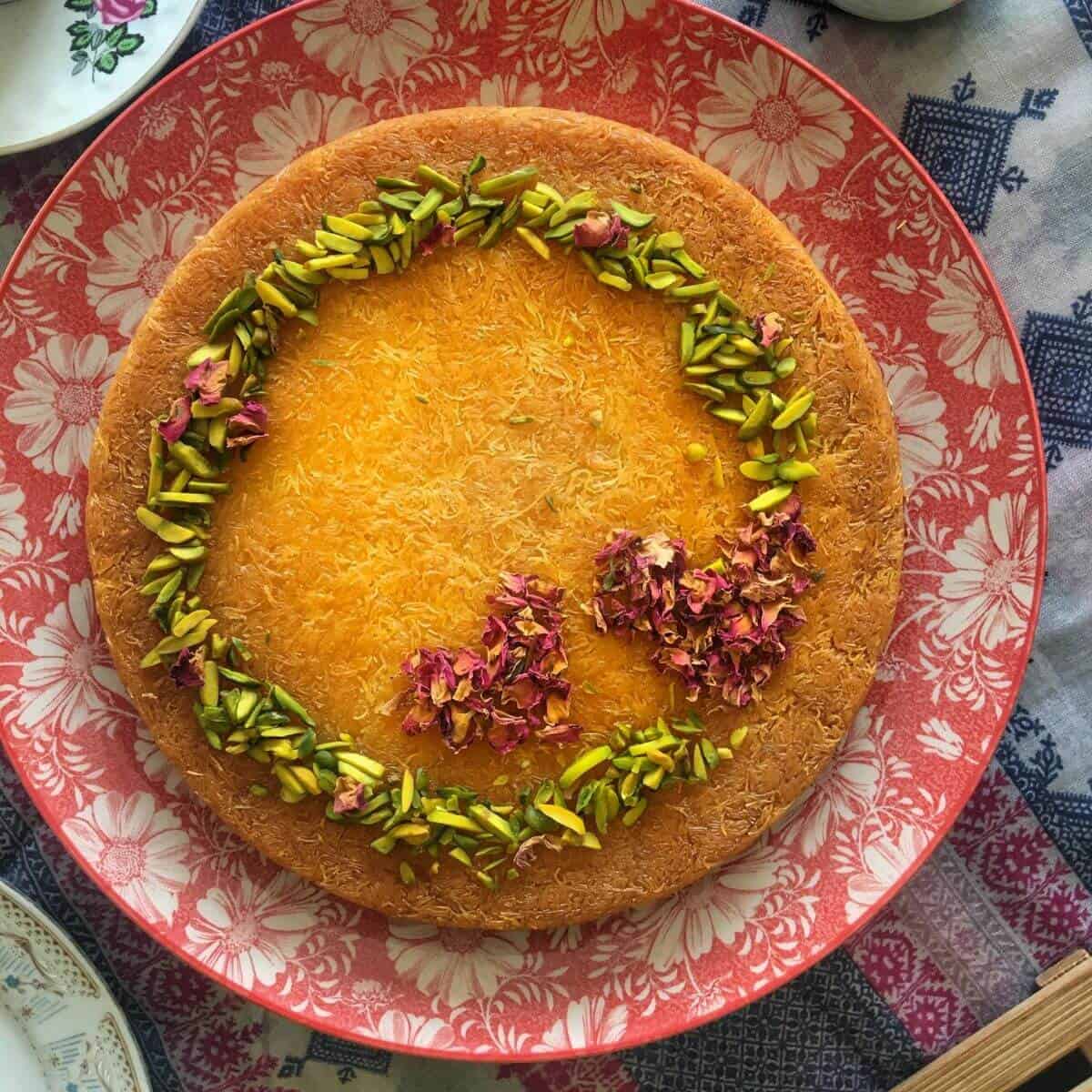
Rabri: A sweet and creamy dessert made from boiling milk until it reduces to a thick consistency, flavored with cardamom, and saffron, and sometimes garnished with nuts like almonds or pistachios. It’s a decadent treat often served cold, offering a rich and indulgent taste.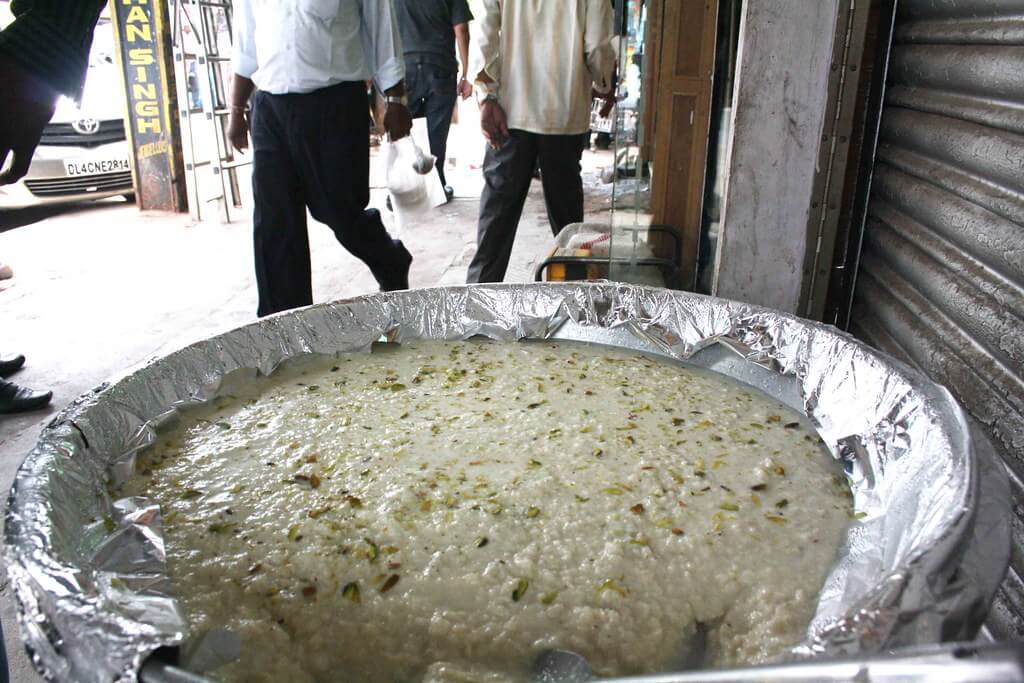
Zarda: A fragrant sweet rice dish cooked with ghee, sugar, saffron, and cardamom, often garnished with nuts and raisins. The rice is dyed with food coloring, giving it a vibrant yellow or orange hue. Zarda is a popular dessert served at festive occasions and celebrations.
Gajar ka Halwa: A classic Indian and Pakistani dessert made from grated carrots cooked in ghee, milk, and sugar until the mixture thickens and the carrots become tender. Flavored with cardamom, garnished with nuts, and often enjoyed warm, it offers a comforting and sweet taste.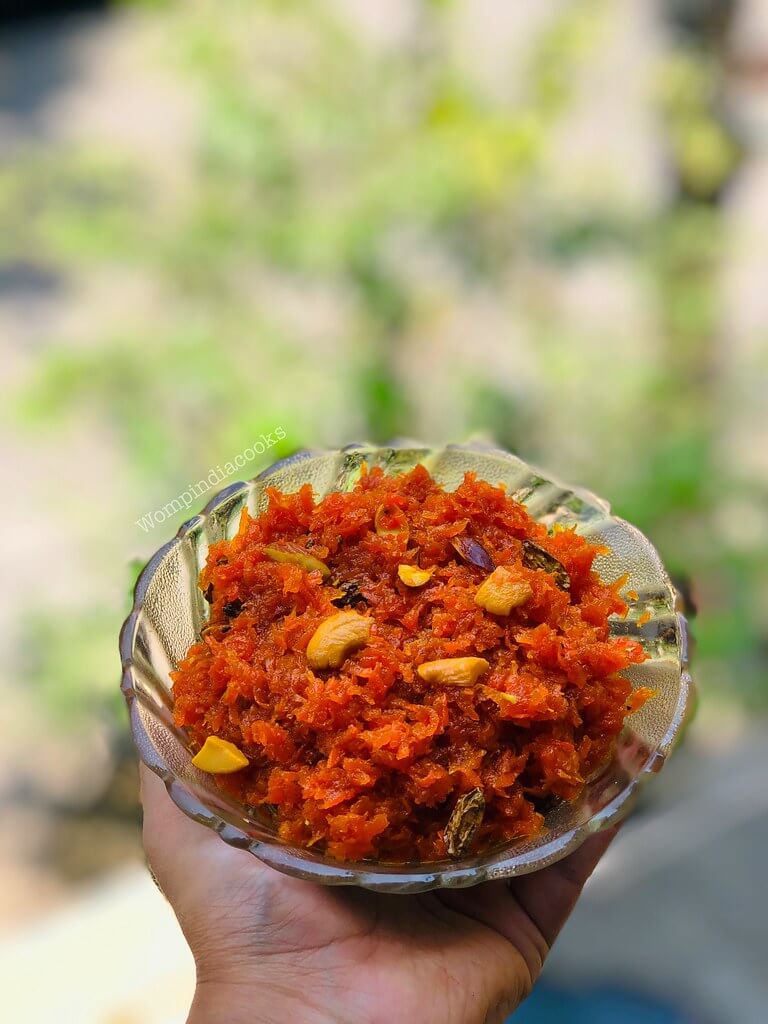
Falooda: A refreshing and indulgent dessert beverage made by layering vermicelli, basil seeds, rose syrup, and sometimes ice cream or kulfi in sweetened milk. Served cold, it provides a delightful mix of textures and flavors, including the floral notes of rose syrup.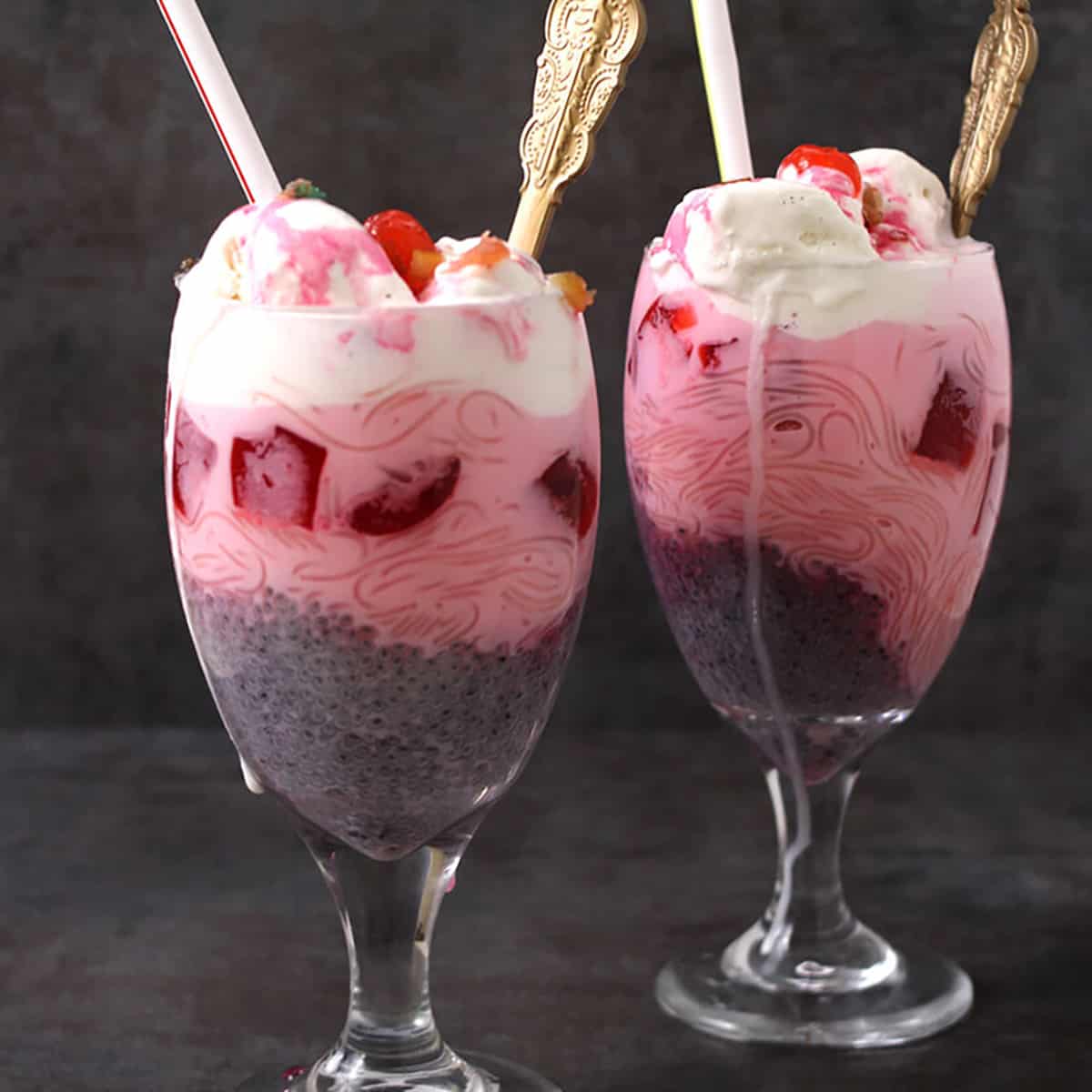
Lassi: A traditional yogurt-based drink blended with water or milk, flavored with sugar or spices like cardamom. It can be sweet or savory and is often served chilled, providing a refreshing and cooling effect.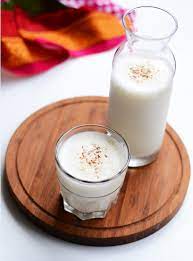
Kheer: A creamy rice pudding made by simmering rice, milk, sugar, and sometimes condensed milk until the mixture thickens, flavored with cardamom, saffron, and garnished with nuts. It’s a popular dessert served on special occasions.
Jalebi: A sweet and crispy Indian dessert made from deep-frying wheat flour batter in circular shapes, then soaking them in sugar syrup, resulting in a syrupy and crunchy treat often enjoyed warm.
Kashmiri Chai: A pink-colored tea brewed with green tea leaves, milk, and a special ingredient called ‘Sodium bicarbonate,’ which gives it its distinct color. It’s flavored with cardamom and garnished with nuts, offering a creamy and aromatic tea experience.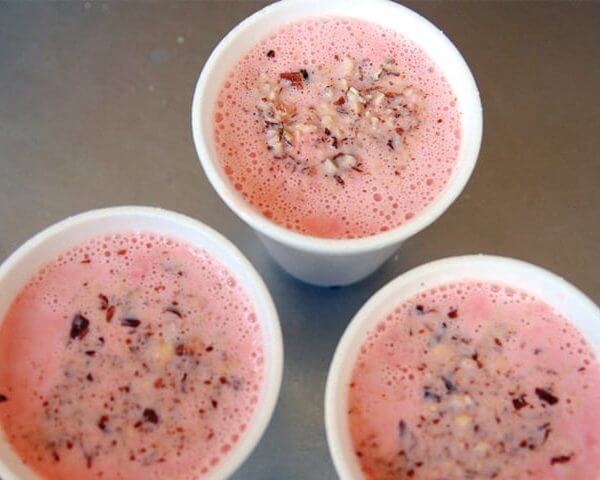
Fruit Chaat: A refreshing salad-like dish made from a variety of fruits like apples, bananas, oranges, and pomegranates, tossed with spices like chaat masala, black salt, and lemon juice. It’s a tangy and flavorful snack often enjoyed for its combination of sweet, sour, and spicy tastes.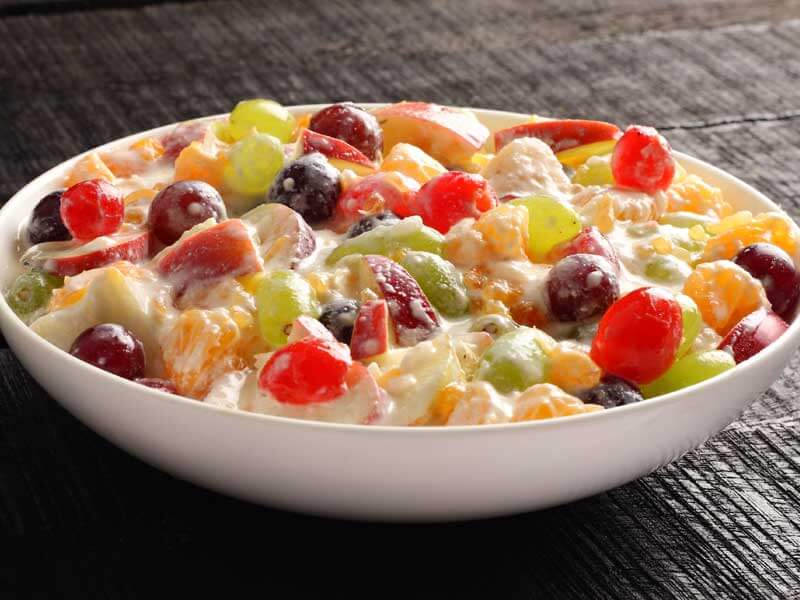
Peshawari Ice Cream: A delightful frozen dessert made with reduced milk, flavored with cardamom, and studded with chunks of nuts like pistachios and almonds. It’s a rich and creamy ice cream with a touch of traditional flavors.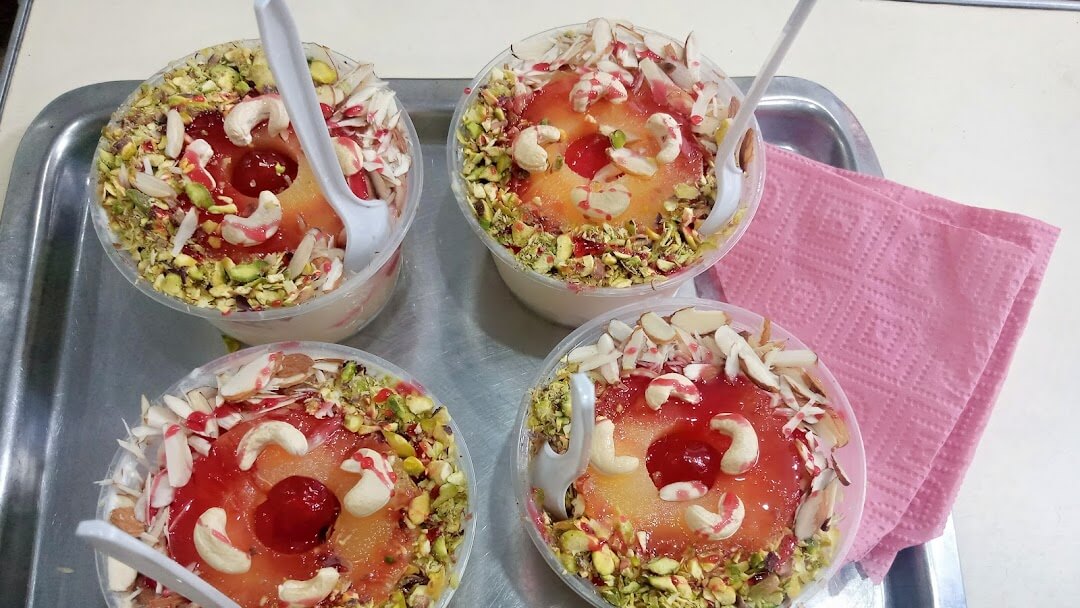
Butter Chicken: A popular Indian dish consisting of tender chicken pieces marinated in a yogurt-based mixture with spices, then cooked in a creamy tomato sauce flavored with butter, cream, and various spices like garam masala. It’s a flavorful and mildly spicy dish often served with naan or rice.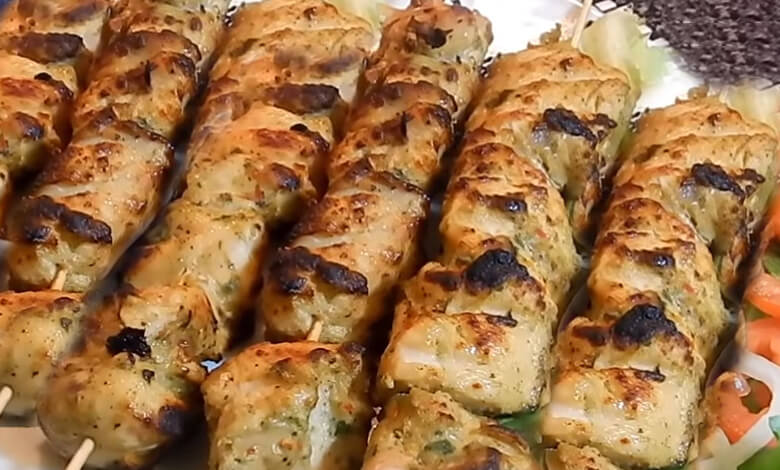
History and Culture
Culinary Roots
Food in Lahore bears the indelible marks of historical influences that have woven a rich tapestry of flavors and culinary traditions over the centuries. The Mughal era, a pinnacle of opulence and gastronomy, bestowed upon Lahore a legacy of aromatic spices, rich gravies, and intricate recipes that continue to define the essence of the city’s cuisine. The Sikh reign contributed its own flavors, amalgamating Punjabi staples with an emphasis on robust, hearty meals. Furthermore, the British colonial period introduced a fusion of cooking techniques and ingredients, leaving an imprint on Lahore’s gastronomic evolution. These diverse cultural influences have lent depth and diversity to the food in Lahore, creating a unique and multifaceted culinary identity.
Evolution of Local Flavors and Recipes Over Time The evolution of food in Lahore mirrors the city’s history, tracing back through generations of chefs and home cooks who meticulously honed recipes, creating a vibrant amalgamation of tastes and aromas. The integration of local produce, aromatic spices, and cooking methods has resulted in an array of dishes cherished by locals and revered by visitors. The interplay of flavors—from the fiery heat of red chilies to the delicate balance of herbs—reflects the city’s evolution, adapting and thriving through various cultural transitions.
Traditional Cooking Methods
At the heart of Lahore’s cuisine lie time-honored cooking techniques that have been passed down through generations. The tandoor, a traditional clay oven, imparts a unique smoky flavor to naans, kebabs, and rotis, elevating the taste of dishes like Seekh Kebabs and Tandoori Chicken. The iconic karahi cooking method, with its robust use of spices and a heavy-bottomed pan, produces Lahori Karahi, a signature dish revered for its rich flavors. Slow-cooking methods, involving hours of simmering over low heat, infuse dishes like Nihari and Paya with depths of flavor, preserving authenticity and ensuring a nuanced taste experience.
Cultural Significance
In Lahore’s vibrant tapestry, food holds a pivotal place, transcending mere sustenance to become a cultural symbol deeply woven into the fabric of society. Celebrations and rituals are incomplete without lavish spreads, where food acts as a unifying force, fostering camaraderie and kinship. From weddings adorned with elaborate dishes like Biryani and Rabri to religious festivals marked by communal feasts, food in Lahore is synonymous with warmth, generosity, and the celebration of shared traditions. These culinary customs not only satiate hunger but also serve as a means of expressing hospitality, affirming social bonds, and preserving cultural heritage.
Tips and Tricks
Best Times to Visit
Discovering the food in Lahore entails timing your visit right to savor the city’s culinary offerings at their peak. Mornings unveil the charm of breakfast delights like Halwa Puri, while evenings are ideal for exploring bustling street food stalls and restaurants exuding a vibrant ambiance.
Navigating Street Food
Sampling street food in Lahore is an adventure in itself, brimming with flavors and authenticity. To relish these local delicacies safely, opt for vendors with high foot traffic—a testament to their popularity and quality. Must-try spots include the food street near Gawalmandi and Anarkali, offering a diverse range of iconic dishes like Gol Gappay and aromatic Seekh Kebabs.
Dining Etiquette
Immersing oneself in Lahore’s food culture extends beyond flavors; it’s also about embracing local dining customs. When dining at local eateries, following cultural norms like removing shoes before entering and using the right hand for eating, resonates with respect for the traditions and values ingrained in the local community.
Cooking at Home
For those intrigued to recreate the flavors of food in Lahore in their own kitchen, simplified recipes provide a gateway. Recipes for Lahori Karahi or Gajar ka Halwa allow enthusiasts to embark on a culinary journey, bringing the essence of Lahore’s cuisine to their tables.
Ingredients in Lahore’s Cuisine
Essential Ingredients The essence of food in Lahore lies in its key ingredients—a melange of spices like cumin, coriander, turmeric, and garam masala infuse dishes with aromatic richness. Meats, predominantly chicken, lamb, and beef, form the core of various iconic dishes, while dairy products like yogurt and paneer add creaminess and depth.
Culinary Staples Specific spices, such as red chili powder and fenugreek, hold significance in Lahore’s dishes, offering a spectrum of flavors ranging from subtle hints of sweetness to fiery heat. The judicious use of garlic and ginger adds a distinct zest to the cuisine, elevating the taste profile of many dishes.
Regional Specialties Lahore boasts unique ingredients specific to the region, like Kasuri Methi (dried fenugreek leaves) and Kala Namak (black salt), which lend a distinctive taste to local dishes. Additionally, indigenous produce like Kinnow (a citrus fruit) and Desi Ghee (clarified butter) amplify the authenticity of Lahore’s cuisine.
Ingredient Origins Exploring the origins of local ingredients uncovers their cultural importance, with spices sourced from various regions of Pakistan and beyond. These ingredients carry historical significance, reflecting Lahore’s trade routes and cultural exchanges, contributing to the city’s vibrant culinary heritage.
Sustainability and Local Sourcing
Emphasis on Locally-sourced Ingredients
The ethos of food in Lahore transcends taste—it embraces sustainability through locally sourced produce, fostering a deep connection with the region’s agricultural bounty. Locally grown fruits, vegetables, and grains, celebrated for their freshness and superior quality, form the backbone of Lahore’s culinary narrative. This emphasis on locally sourced ingredients not only supports the local economy but also reduces the carbon footprint associated with food transportation, aligning the food culture with sustainable practices.
Restaurants Promoting Sustainability
Lahore’s gastronomic landscape hosts a cadre of eateries and markets dedicated to sustainable practices, echoing the city’s commitment to environmental consciousness. Markets such as Liberty Market and Model Town Market curate fresh produce sourced directly from local farmers, advocating for sustainable farming practices. Restaurants like Cuckoo’s Den and Andaaz Restaurant exemplify this commitment by prioritizing locally sourced ingredients in their menus, ensuring patrons savor the authentic flavors while supporting ethical sourcing.
Impact of Sustainability on Traditional Dishes
The pivot towards sustainability echoes in the flavors of traditional dishes, showcasing how conscientious sourcing enhances the taste and quality of food in Lahore. Locally-grown spices and organic produce infuse dishes with unparalleled freshness and depth, elevating the gastronomic experience. For instance, dishes like Saag benefit from the robust flavors of locally sourced mustard greens and spinach, accentuating their natural essence. Additionally, the use of sustainably raised meats and dairy not only ensures ethical practices but also contributes to the superior taste and texture of iconic dishes like Lahori Karahi and Biryani, setting a benchmark for gastronomic excellence.
Pairings and Recommendations
Beverage Pairings
Lahore’s vibrant cuisine offers a harmonious symphony of flavors that pair exquisitely with an array of beverages, elevating the dining experience. Lassi, a traditional yogurt-based drink, acts as a refreshing counterbalance to the spicy notes found in dishes like Lahori Karahi or Seekh Kebabs. The soothing essence of Kashmiri Chai perfectly complements the richness of desserts such as Gajar ka Halwa or Rabri, offering a delightful balance of flavors.
Dish Combinations
Creating culinary synergies through dish combinations enhances the culinary journey of food in Lahore. Pairing Nihari with hot, freshly baked Naan elevates the experience, allowing the bread to soak up the rich, flavorful broth. Similarly, relishing Chapli Kebabs alongside a serving of Mint Chutney offers a delightful interplay of savory flavors, accentuating the kebabs’ aromatic spices.
Alternative Food Destinations
Beyond Lahore’s culinary delights, exploring neighboring regional dishes or restaurants provides a broader perspective on Pakistani cuisine. Venturing to nearby Rawalpindi unveils the flavors of Sohail Nihari—an establishment celebrated for its rendition of the iconic dish. Additionally, Peshawari cuisine in the northwest region offers an assortment of smoky meats and robust flavors, complementing the rich tapestry of food in Lahore and providing a diverse palate of tastes for enthusiasts.
Cultural Significance
Role of Food in Cultural Expression
Food in Lahore stands as a vibrant expression of the city’s culture, intricately intertwined with its values, beliefs, and way of life. It serves as a conduit, weaving together threads of history, tradition, and community, symbolizing much more than mere sustenance. The preparation and sharing of meals hold a deep significance, embodying hospitality, respect, and kinship that define the social fabric of Lahore.
Food as a Reflection of Values and Beliefs
The culinary landscape of Lahore mirrors the values and beliefs cherished by its people. The emphasis on communal dining and the sharing of food underscores the city’s ethos of warmth and generosity. Every dish, whether served in lavish banquets or humble households, embodies the essence of unity, reinforcing the importance of togetherness and familial bonds.
Festivals and Rituals Revolving Around Food
In Lahore, festivities and rituals are inseparable from food. Celebrations, be it weddings, religious festivals, or cultural events, are marked by a lavish spread of traditional dishes. These feasts symbolize abundance, prosperity, and a sense of collective joy. They bring communities together, fostering a sense of unity and reinforcing cultural identity.
Preservation of Culinary Heritage
The reverence for traditional recipes and cooking methods in Lahore reflects the city’s commitment to preserving its culinary heritage. Passed down through generations, these recipes carry stories of the past, serving as a link to ancestral practices and cultural roots. By upholding these culinary traditions, Lahoris honor their history and pass on cultural knowledge to future generations.
Food as a Social Connector
Food in Lahore transcends mere nourishment; it acts as a universal language, transcending barriers and connecting people from diverse backgrounds. Whether sharing a meal at a bustling food street or partaking in home-cooked delicacies, the act of eating together fosters understanding, forging friendships, and fostering a sense of camaraderie among individuals from varied walks of life.
Conclusion
In exploring the culinary kaleidoscope of Lahore, one embarks on a journey that transcends mere sustenance—it’s a cultural immersion, a celebration of heritage, and a revelation of flavors steeped in history. The food in Lahore resonates with an unparalleled richness and diversity, a tapestry woven with the threads of tradition, innovation, and a profound sense of community.
Lahore’s food culture isn’t just about the delectable array of dishes; it’s an invitation to delve into the city’s soul, to experience its vibrant essence through the tantalizing aromas and tastes that grace every plate. From the aromatic spices that dance on the palate to the succulent meats infused with generations of culinary expertise, each bite embodies the city’s storied past and vibrant present.
Embracing Lahore’s culinary heritage is an embrace of the city itself—a warm, inviting, and spirited embrace that beckons travelers and food enthusiasts alike. It’s an encouragement to wander through the bustling streets, to partake in the sizzle of grills and the fragrant pots that fill the air with promises of gastronomic adventures.
The cultural significance of food in Lahore is profound—it’s the cornerstone of celebrations, the glue that binds families and communities, and the medium through which traditions are passed down through generations. In every meal shared, whether at lavish feasts or humble street stalls, lies a story—a tale of history, customs, and the cherished values of warmth and hospitality.
As we bid adieu to this culinary odyssey through the heart of Lahore, let the flavors linger and the memories inspire. Let the food in Lahore serve as an enduring reminder of the city’s unparalleled cultural richness, an invitation to all to explore, savor, and cherish the legacy woven into every dish—a legacy that defines Lahore, a city where food is not just a necessity, but a celebration of life itself.

